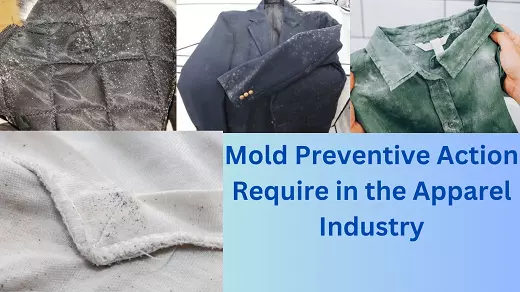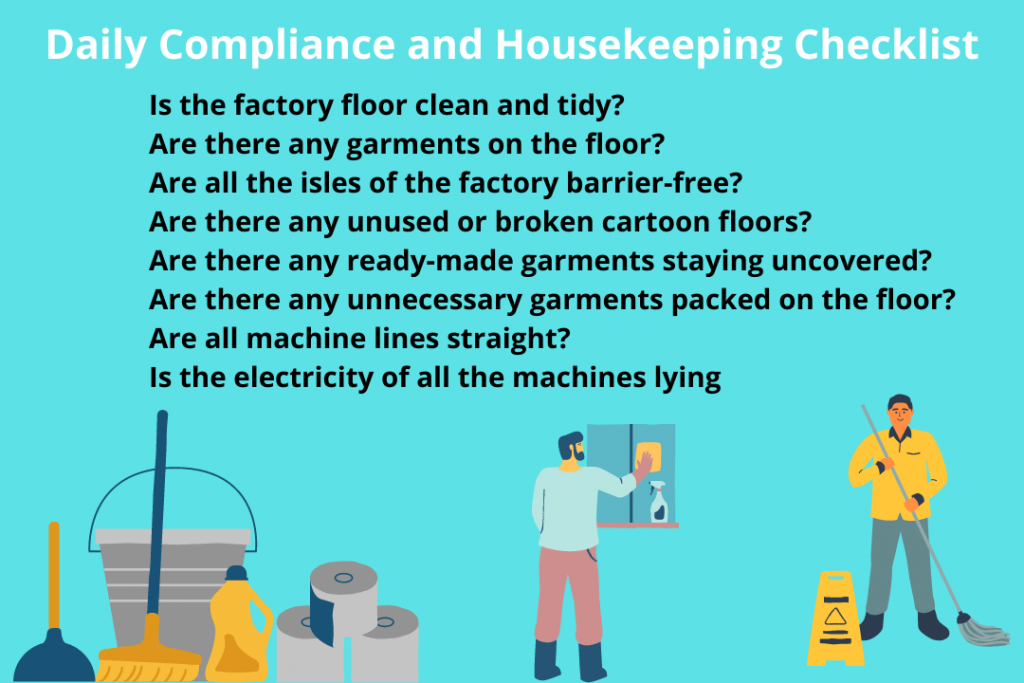Mold can be a detrimental adversary in the apparel industry, causing severe damage to clothing leading to financial losses and health hazards. To safeguard against this menace, several preventive measures can be adopted within the apparel manufacturing process and storage facilities. In this article, we present Mold Preventive Action Required in the Apparel Industry. Here are essential strategies to combat mold.

Mold Preventive Action Require in the Apparel Industry
General Mold Preventive Action
- The general condition of the production unit must be dry and clean, and no signs of mildew are allowed.
- Storage and production environment must be controlled and maintained throughout the whole process, i.e., From raw materials to finished product.
- All kinds of equipment, especially dryers and extractors, must be well maintained and cleaned on a regular basis in order to provide full efficiency.
Material, Components, and Carton Storage
- Storage room temperature and humidity must be controlled and recorded on a daily basis. Records must be tidy and available for review upon request.
- Dehumidifiers should be used in storage areas.
- Before storage, moisture content should be checked and recorded on all incoming fabric, labels, and cartons.
- Warehoused materials, components, and cartons must be placed on pallets/shelves and not directly on the floor. Metal and/or plastic pallets should be used. Wooden pallets must not be used.
- Warehoused materials, components, and cartons must not be placed next to walls, windows and doors. The minimum distance from walls, windows, and doors must be a minimum of 1.5 meters.
- All storage activities adhere to the principles of First in First Out (FIFO).
Production area
- The production area must be kept dry and clean.
- Before production starts, it should be ensured that the material and components are dry and clean.
Packaging/finishing area
- Check the moisture content of products and cartons and keep daily records.
- Do not pack moist/wet and warm merchandise (directly after ironing or tumble drying). Allow sufficient time for goods to “cool” before packing, e.g., for 2 hours.
Finished goods warehouse
- Finished goods/cartons must be placed on pallets. Metal and/or plastic pallets should be used. Wooden pallets must not be used.
- No cartons shall be placed directly on the floor.
- Finished goods/cartons must not be placed next to walls, windows, and doors. The minimum distance from walls and windows must be 1.5 meters.
- Keep the warehouse dry and clean.
- Dehumidifiers should be used in the finished goods warehouse.
Moisture regains Summary Table.
During Moisture Inspection, the requirement should be fixed according to customer requirements. If the customer doesn’t have any specific requirement, the below chart should be followed-
| FIBRE | RECOMMENDED INDEX LIMIT |
| Cotton | 65 |
| Wool | 24 |
| Lines | 73 |
| Silk | 44 |
| Viscose | 44 |
| Polyamide/Nylon | 65 |
| Acetate | 60 |
| Acrylic | 40 |
| Polyester | 37 |
| Artificial leather (PU) | 30 |
| Real leather | 50 |
| Carton box | 60 |
Pest control procedures
- Within every three months, pest control should be done by hiring an expert third party.
- Pest control should be done on any holiday.
- It should be ensured by the person who will supervise the pest control activities from the factory side that proper dodge and ratio of insecticide are used.
- An electronic insect catcher should be hung in every sewing and finishing plant within a required distance.
Conclusion
In conclusion, mitigating mold in the apparel industry demands a proactive approach involving meticulous attention to humidity control, storage practices, material selection, employee training, and consistent monitoring. By implementing these preventive measures, apparel manufacturers can safeguard their products against mold, ensuring quality, safety, and customer satisfaction. These Mold Preventive Actions will be helpful for the Apparel Industry.
- You would love to read: Mold Prevention and Control SOP of Garments


